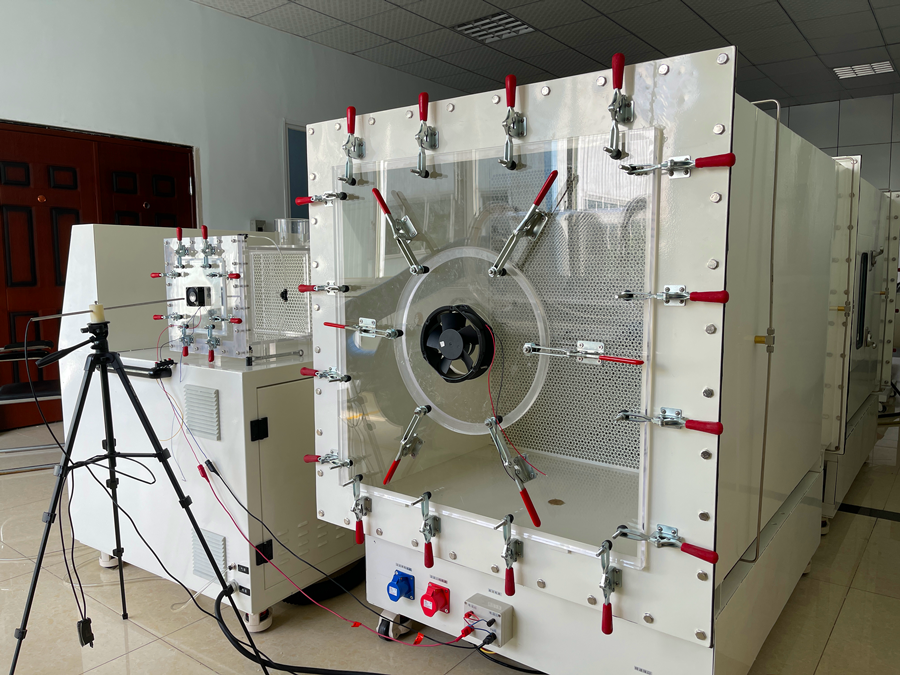Cooling fans are essential components widely used in electronic devices, mechanical systems, and high-temperature environments to achieve heat dissipation through forced convection. Their operating principle is to remove hot air, thereby lowering the device's temperature. However, due to varying application scenarios and environmental conditions, different fan speeds and airflow volumes may be required. Therefore, the design of cooling fans must take multiple factors into account, such as airflow, pressure, airflow paths, and system impedance. Below is an overview of the key steps involved in the design process of cooling fans.
Step 1: Measure the Relationship Between Airflow and Pressure
The first step in cooling fan design is to measure the relationship between airflow and pressure. These two factors are crucial in determining the fan's heat dissipation effectiveness. Typically, two methods are used to test airflow characteristics: wind tunnel testing and dual-chamber testing.
Wind Tunnel Testing: The fan is placed in a wind tunnel to simulate different airflow speeds and environmental conditions. This allows measurement of the fan's airflow and static pressure. This method effectively evaluates the fan's performance under various operating conditions.
Dual-Chamber Testing: This method adjusts air density by extracting air through a variable exhaust system, which leads to changes in static pressure and airflow when the nozzle is suddenly opened. The pressure readings from the manometer help accurately determine the airflow and pressure relationship.
Under standard atmospheric conditions and fixed operating voltage and frequency, static pressure is typically a function of airflow volume. Using these test data, the static efficiency of the fan can be calculated. Static efficiency is defined as the product of airflow and static pressure, divided by the input electrical power. In fan design, efficiency includes not only the motor's efficiency but also the airflow efficiency of the blades and housing.

Step 2: Consider System Impedance and Characteristic Curves
In actual operation, the airflow in a cooling fan encounters resistance from internal components, which limits the free flow of air. To optimize heat dissipation, it is essential to understand the system impedance curve and its relationship with airflow and pressure.
System Impedance: The resistance to airflow changes with the airflow volume, generating a system impedance characteristic. Changes in system impedance directly affect the fan's efficiency. Designers must estimate the impact of system impedance on fan performance based on airflow and the internal component layout.
Intersection of System and Fan Characteristic Curves: The optimal operating point of a cooling fan (i.e., the system operating point) is the intersection of the system and fan characteristic curves. At this point, fan efficiency is maximized, and the combination of airflow and pressure achieves optimal heat dissipation. At this point, the fan's rate of change is minimal, and system impedance also changes at a low rate.
To achieve the best static efficiency (airflow × pressure ÷ power consumption), it is critical during design to ensure that the system's operating point is positioned optimally. Designers must adjust fan speed, blade design, and intake position to ensure the fan operates efficiently at this point.
Step 3: Optimize Airflow Path and Structural Design
In addition to airflow and pressure, the design of the airflow path in a cooling fan significantly impacts its heat dissipation efficiency. To maximize fan performance, the following aspects should be considered:
Smooth Airflow: The design should ensure that the airflow is as unobstructed as possible. The intake and exhaust openings should be wide enough to avoid turbulence or resistance that could decrease overall efficiency.
Guided Airflow Design: The fan's housing and blade design should ensure a clear airflow path, avoiding unnecessary backflows or air leaks. Guiding the airflow vertically through the system improves cooling efficiency, ensuring the device maintains stable working temperatures even under high loads.
Reducing Air Resistance: When designing the fan housing, careful attention should be paid to the structural integrity to avoid design flaws that increase air resistance. For example, the blade angle and shape should be carefully calculated to ensure smooth airflow while maintaining sufficient pressure.
Step 4: Material Selection and Thermal Performance
The choice of materials in a cooling fan is crucial for its heat dissipation performance. Common materials for cooling fans include aluminum alloy, plastic, and copper, each with different thermal conductivity, weight, and durability properties.
Aluminum Alloy: Known for its excellent thermal conductivity, aluminum is ideal for high-performance cooling fans. It efficiently transfers heat and is widely used in industrial equipment and high-performance electronic devices.
Plastic: Lightweight and cost-effective, plastic has lower thermal conductivity. It is suitable for applications with lower power and moderate heat dissipation requirements.
Copper: With the best thermal conductivity, copper is ideal for environments with extremely high cooling demands, though it is more expensive.
The choice of materials for the fan housing and blades should be based on the specific application to balance thermal performance and cost control.
Step 5: Noise Control and Vibration Suppression
Efficient cooling fans may produce noise and vibrations during operation, which can affect user experience and the stability of the equipment. To reduce noise and vibrations, consider the following factors:
Blade Design: Optimizing the shape and angle of the blades reduces turbulence during airflow, thereby lowering noise levels.
Vibration Dampening: Incorporate damping devices such as rubber gaskets or soft materials into the fan’s mounting and support structure to minimize vibration transmission.
Motor Selection: Choose low-noise, high-efficiency motors, and ensure proper alignment with other components to reduce mechanical noise.
Professional Fan Design and Innovation
As an industry-leading cooling fan manufacturer, Ruiapple Electric is dedicated to providing efficient and reliable cooling solutions. We integrate advanced Computational Fluid Dynamics (CFD) technology and precise engineering design to optimize the balance between airflow, pressure, and system impedance, ensuring the fan performs optimally in complex environments. Additionally, we focus on noise control and vibration suppression, offering low-noise, high-efficiency fan products that meet customer demands for both performance and comfort.
Through continuous innovation and research, Ruiapple Electric is committed to providing customers with more efficient and reliable cooling fans, ensuring the stable operation of their equipment.






